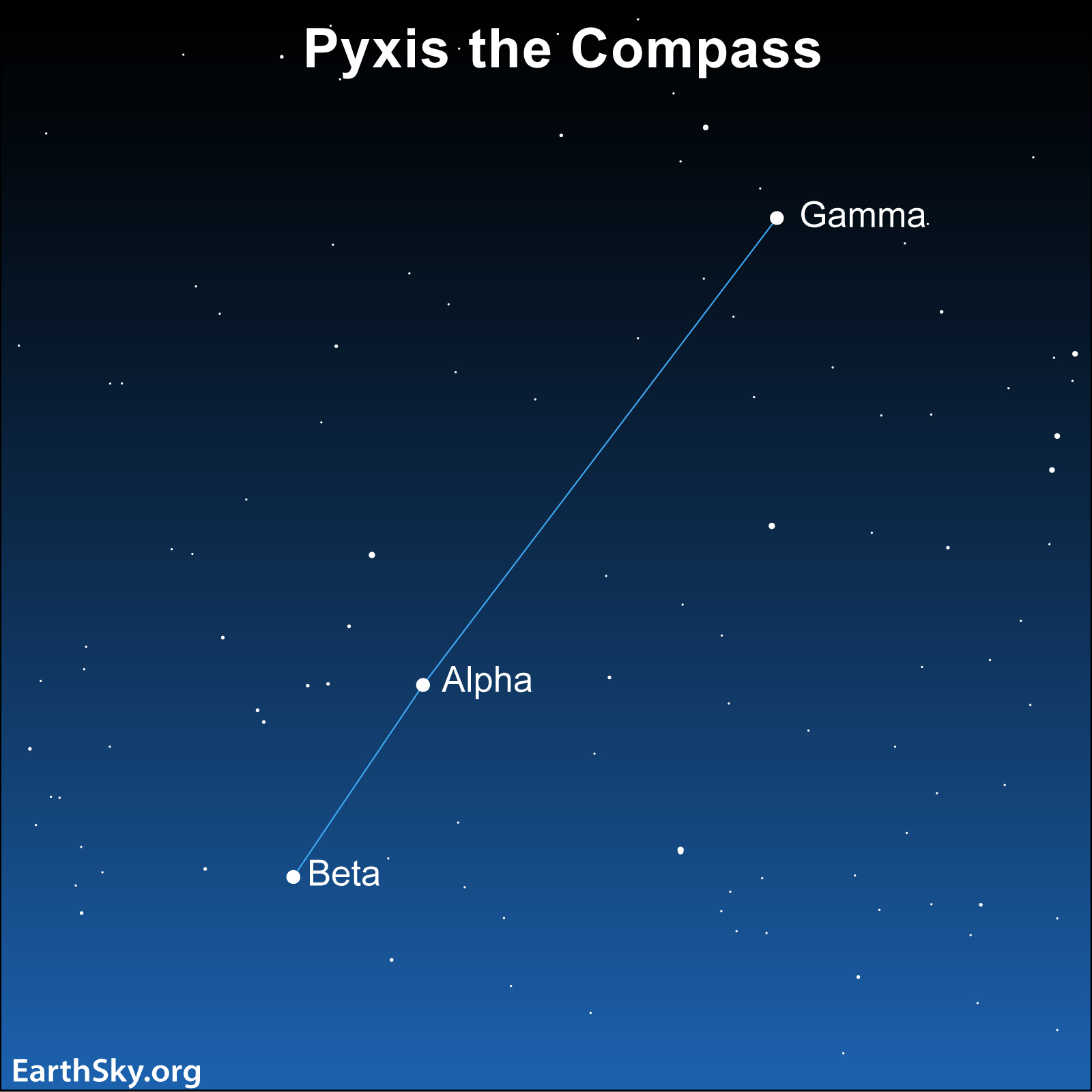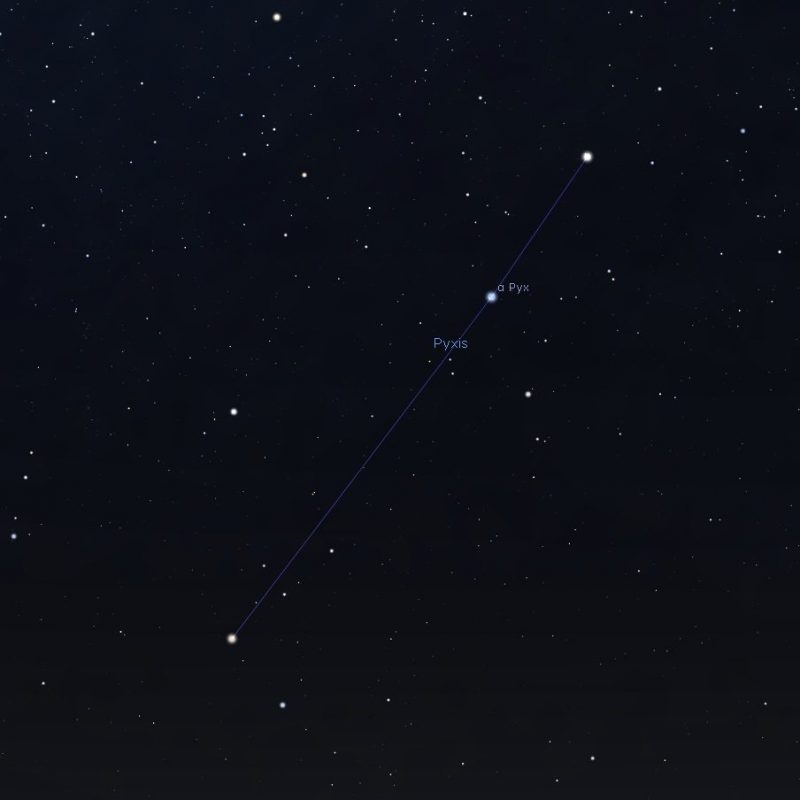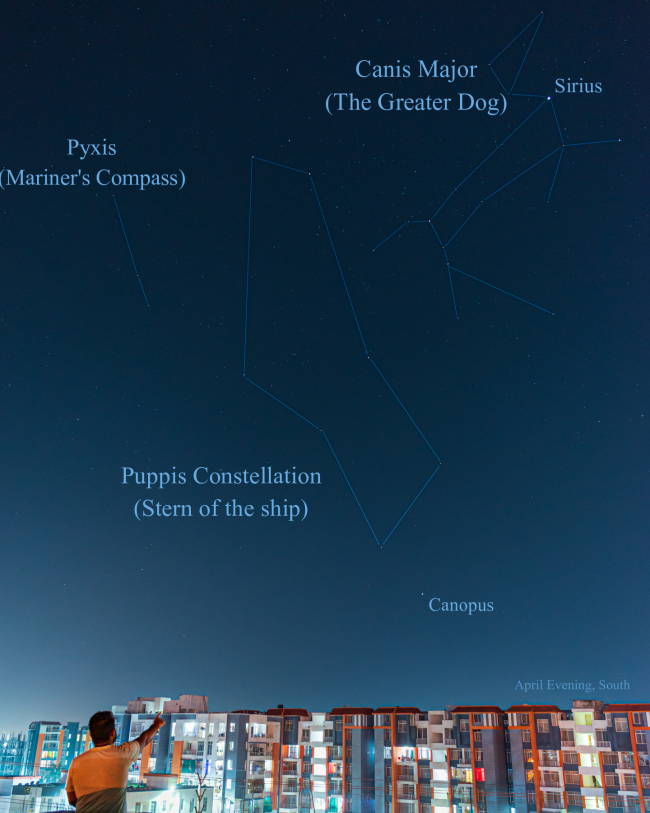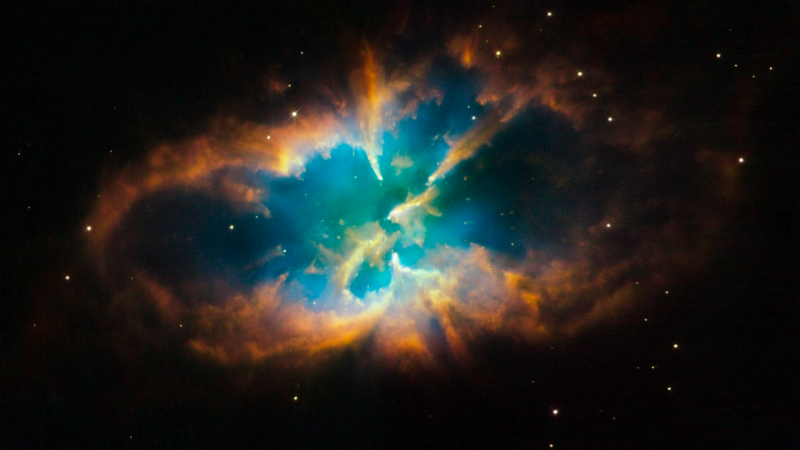
The constellation Pyxis the Compass
Pyxis the Compass is a constellation in the Southern Hemisphere that, surprisingly, some viewers in the Northern Hemisphere can see if they live at more southerly latitudes. Indeed, March is a good month to view Pyxis, regardless of the hemisphere you are in. The constellation lies southeast of Canis Major and Puppis.


How to find Pyxis
Also, Pyxis is another of the 14 constellations that Nicolas-Louis de Lacaille created. It represents a ship’s compass (not to be confused, however, with Circinus, a different constellation that represents a drawing compass). Conveniently, this ship’s compass lies next to the three constellations – Puppis, Vela and Carina – that make up the former constellation of Argo Navis the Ship.
Northerners, especially, will probably have an easier time finding Pyxis by using the familiar star Sirius in Canis Major and looking toward the east to the quiet part of the sky where Pyxis resides.

The stars of Pyxis the Compass
The Alpha and Beta stars of Pyxis lie in the southern part of the constellation. More specifically, Alpha Pyxidis is magnitude 3.68 and lies 845 light-years away. Likewise, just over two degrees to the south is Beta Pyxidis at magnitude 3.97 and lying 388 light-years away.

In addition, both Alpha and Beta have faint star clusters lying a half degree to the northwest. Alpha’s star cluster is NGC 2658 at magnitude 9.2. Beta’s star cluster is NGC 2635 at magnitude 11.2. With this in mind, you’ll want binoculars or a telescope to track them down. NGC 2635 in particular is a true challenge.
However, there are two other deep-sky targets in Pyxis that are somewhat brighter. One is NGC 2627, a magnitude-8.4 star cluster lying 3 1/2 degrees northwest of Alpha, or just a 1/2 degree southwest of Zeta Pyxidis, a magnitude 4.86 star. The other, meanwhile, lies in the southeast corner of the constellation. NGC 2818 is a magnitude 8.19 grouping about 7 1/2 degrees east of Beta. Even better, though, is its planetary nebula, at magnitude 11.6, which we can see in the glorious Hubble photo, below.

Bottom line: Pyxis the Compass is a constellation that lies in southern skies that Northern Hemisphere viewers can get a glimpse of in March. Nicolas-Louis de Lacaille created the constellation in the 18th century.
The post Pyxis the Compass on March nights first appeared on EarthSky.
0 Commentaires